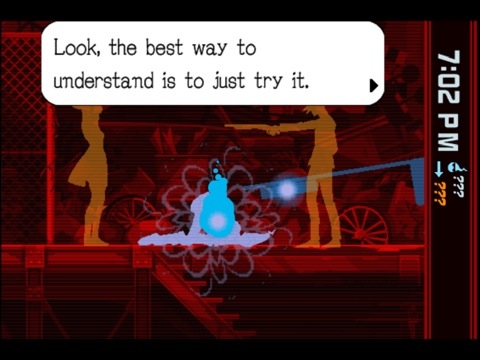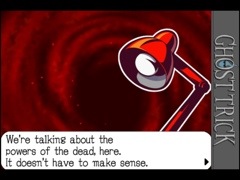Mobile Games: Tutorials Should Fit Mobile Attention Spans

Gamers might not like to admit it, but everybody needs a little help the first time firing up a new game. Experienced gamers can probably guess at what the controls are for common genres - how long has it been since the Madden series has made any kind of meaningful change in controls? For games that are a little more unique though, gamers need help in figuring out not only what buttons to push, but also on a deeper level gamers need to get familiar with what the game is all about. Since we all know that users/gamers/humans don’t read, the usual answer is some kind of in-game tutorial.
Then what happens when you throw a unique game type onto a mobile platform where there are no buttons? Where every game has totally different controls? Well, you might get something like Ghost Trick: Phantom Detective, originally a Nintendo DS game ported to iOS that (in a nutshell) features a dead protagonist going around possessing inanimate objects. Ghost Trick features an introductory tutorial level that takes the gamer around 25 minutes to complete! Tutorials for mobile games need to have more action sooner to grab and keep the interest of their probably distracted and already busy audience.

To be more specific, to complete the whole tutorial “scene” in Ghost Trick, it takes about 25 minutes. A majority of that is dialogue between the characters, a lot of it either excessively wordy, or directly guiding the gamer to do something. The total amount of actual gameplay in there is actually quite short, maybe about 3 or 4 of those minutes. It takes about 15 minutes of real-world time to get to the first time that you have any kind of real impact on the tutorial, other than tapping through a ton of dialogue.
15 minutes! Think about that. Gamers have to dedicate 15 minutes of their time before even getting a sniff of a decision they can flex their gaming muscles on. That’s asking for a serious amount of attention from someone who’s just two taps away from any number of other forms of entertainment. And this is from a game that is technically free to download, but you have to pay to unlock a majority of the game’s content. When the game was on the Nintendo DS, this makes a lot more sense because the game has already been purchased - but on iOS, this tutorial level is what needs to entice players into spending cash on the full version.
Asking for a whole sitcom’s worth of time before gamers get a reasonable guess at what the game play is going to consist of isn’t a great tactic for the mobile world. For mobile gamers with a short attention span, give users a good idea of what gameplay will be like in the first two minutes.

In Ghost Trick’s defense, it has unique gameplay that needs a lot of explaining. Right in the game’s description it’s billed as an “interactive mystery” - that’s something that obviously is going to be text-heavy. And it’s a game that originated in Japan on the Nintendo DS, where games with a lot of reading are pretty normal. But that’s still not a great excuse for unnecessarily descriptive text like “The ghost button, eh? Guess I’ll give it a little tap”, blatantly prodding players to do something.
So, for all the mobile game developers out there, here’s the 4 Keys of Mobile Game Tutorials presented by thatgame’s(ux).
- Tutorials are Lame - let’s be honest, nobody wants to admit to needing a tutorial. We just want to play the game as quickly as possible. Therefore, avoid a tutorial if at all possible.
- Keep it Short - mobile gamers have a lot of gaming options at their fingertips, and probably a limited time to play (and even shorter attention span). So keep your introductory tutorial short, and give potential users a chance to see what gameplay is like in the first two minutes.
- Gamers Need Stimulus - make sure mobile gamers have something to do right away. Nobody wants to read your wall of text or help manual, make the tutorial part of playing the game.
- Progressively Reveal More Features - about 50% of the last Grand Theft Auto game I played felt like a tutorial, as it was constantly revealing new features I had no idea it had. It’s fine if your mobile game is complex, but make it start out simple and let the player grow into its complexity.
If your game is in Apple’s App Store or Google’s Play Store, I don’t need to tell you there’s a lot of competition. There are more awesome games (and to be fair, terrible games) today than ever before. So don’t make the first 15 minutes of your game suck!
(Footnote: Just to be clear, I do like Ghost Trick - it’s a cool game with a quirky concept and a compelling story. Ghost Trick isn’t Angry Birds, and that’s obviously by design. But I think it would be more successful on the App Store if it took a few cues from the more casual gaming crowd and got things moving a little bit quicker.)